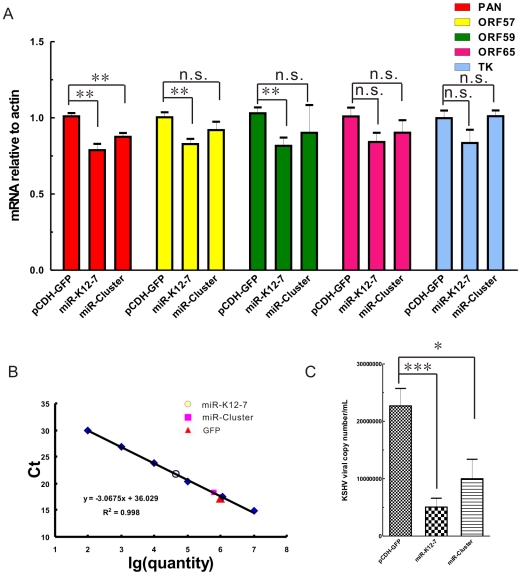Figure 4. miR-K12-7 downregulates the expression of the genes downstream from RTA and impairs the production of progeny virus.
(A) RNA levels of the early genes PAN, ORF57, and ORF59 were slightly downregulated by miR-K12-7 and those of the late genes ORF65 and TK were unaffected by miR-K12-7. Forty-eight hours after induction with TPA and VPA, the 293/Bac36 cells transfected with the individual miRNA expression constructs or the corresponding empty vector were harvested and total RNA was extracted from them with TRIzol Reagent. RNA levels of the early genes PAN, ORF57, and ORF59 and the late genes ORF65 and TK were assayed by RT–PCR and quantified relative to β-actin mRNA levels. The data shown are from triplicate independent experiments. (B) The standard curve for virion quantification used to calculate the number of KSHV virions in the supernatants of miRNA-transfected 293/Bac36 cells. (C) miR-K12-7 significantly impaired the production of progeny virus in the supernatant of 293/Bac36 cells after chemical induction. Latently KSHV-infected 293/Bac36 cells synchronized by culture in serum-free medium were pretransfected with 4 µg of individual miRNA-expressing constructs or empty vector 12 h after the addition of serum. After a further 4 h, the S-phase 293/Bac36 cells were induced to lytic replication with both TPA (25 ng/mL) and VPA (3 mM). The viral genomes from the supernatants were extracted five days after induction and were assayed by real-time PCR. The viral copy numbers were calculated from the standard curve derived from the ORFK9 construct. The data shown are from triplicate independent experiments. *P<0.05; **P<0.01; *** P<0.001; n.s., not significant. t test.

